This post may contain affiliate links which help support Girls Can Grill.
There are a few different types of beef ribs out there, but do you know what’s what from what? I didn’t used to, so I thought I would share this tutorial with you to help you cook the meatiest, beefiest ribs.
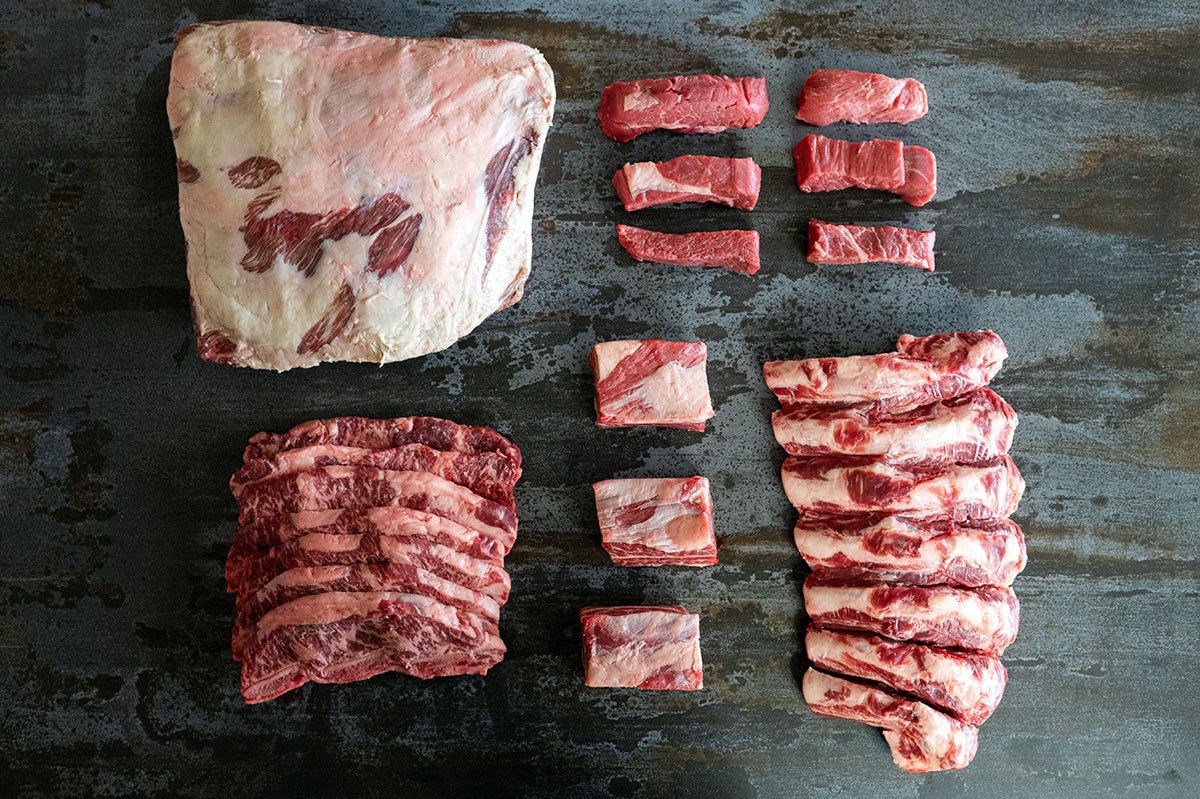
Save this BBQ Tip
Enter your email, and I’ll send this link directly to your inbox. Plus, you’ll get new BBQ recipes and tips weekly.
The 3 Main Types of Beef Ribs
- Back Ribs
- Plate Ribs
- Short Ribs
The various types of beef ribs on a cow are located in three different primal muscle sections – the rib, chuck and plate.
Because the meat marbling in each of these primals varies, some are a bit richer than others. They all cook best when smoked or barbecued for a long period of time to break down the connective tissue.
When the ribs are butchered, they are classified by different numbers. From within these cuts, butchers break beef rib cuts down even more into cuts like English cut, Flanken ribs, rib fingers and boneless ribs.
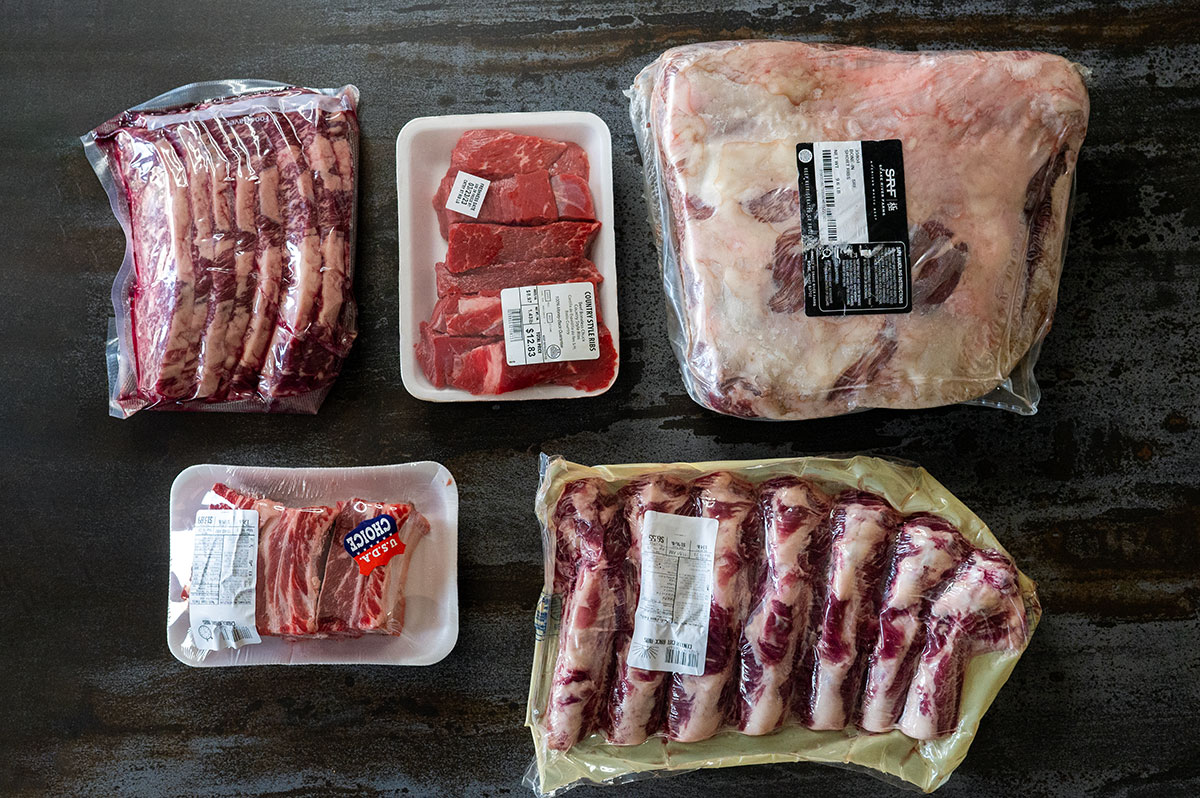
What gets confusing is that a lot of the packaging in the grocery store will say “short ribs,” so it may be unclear exactly what you’re getting.
Follow along to learn what each of these cuts are and how they can be grilled or barbecued.
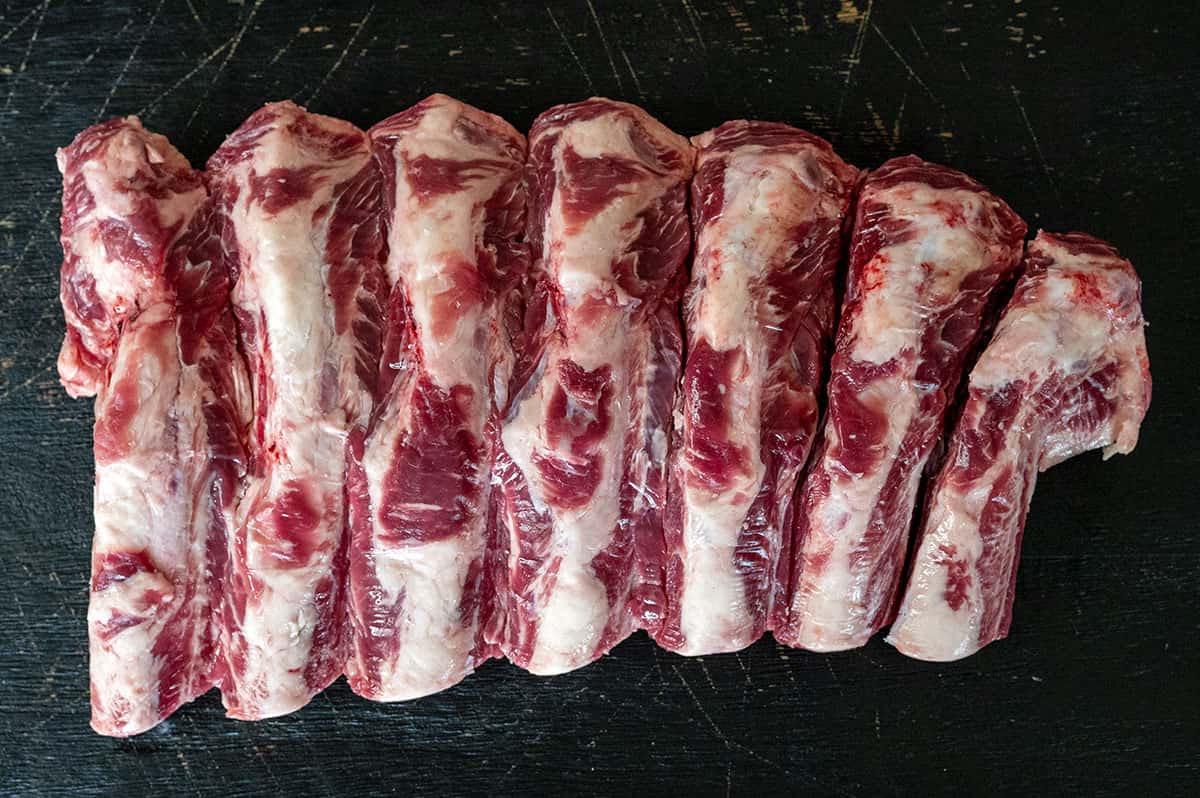
Beef Back Ribs
I’m going to start with beef back ribs, because they are not short ribs. They are flat and come in a long rack like pork ribs do. They are removed from the top side of the rib primal, which is where prime rib and ribeyes come from.
A rack should include seven bones that are 6-8 inches long.
Compared to the other types of ribs, beef back ribs yield the least amount of meat. Most of the meat lies in between the bones, and the bones will expose themselves out of the top as they cook.
While they have less meat, they’re still delicious and can be cooked on a grill or smoker.
Try my recipe for Smoked Beef Back Ribs
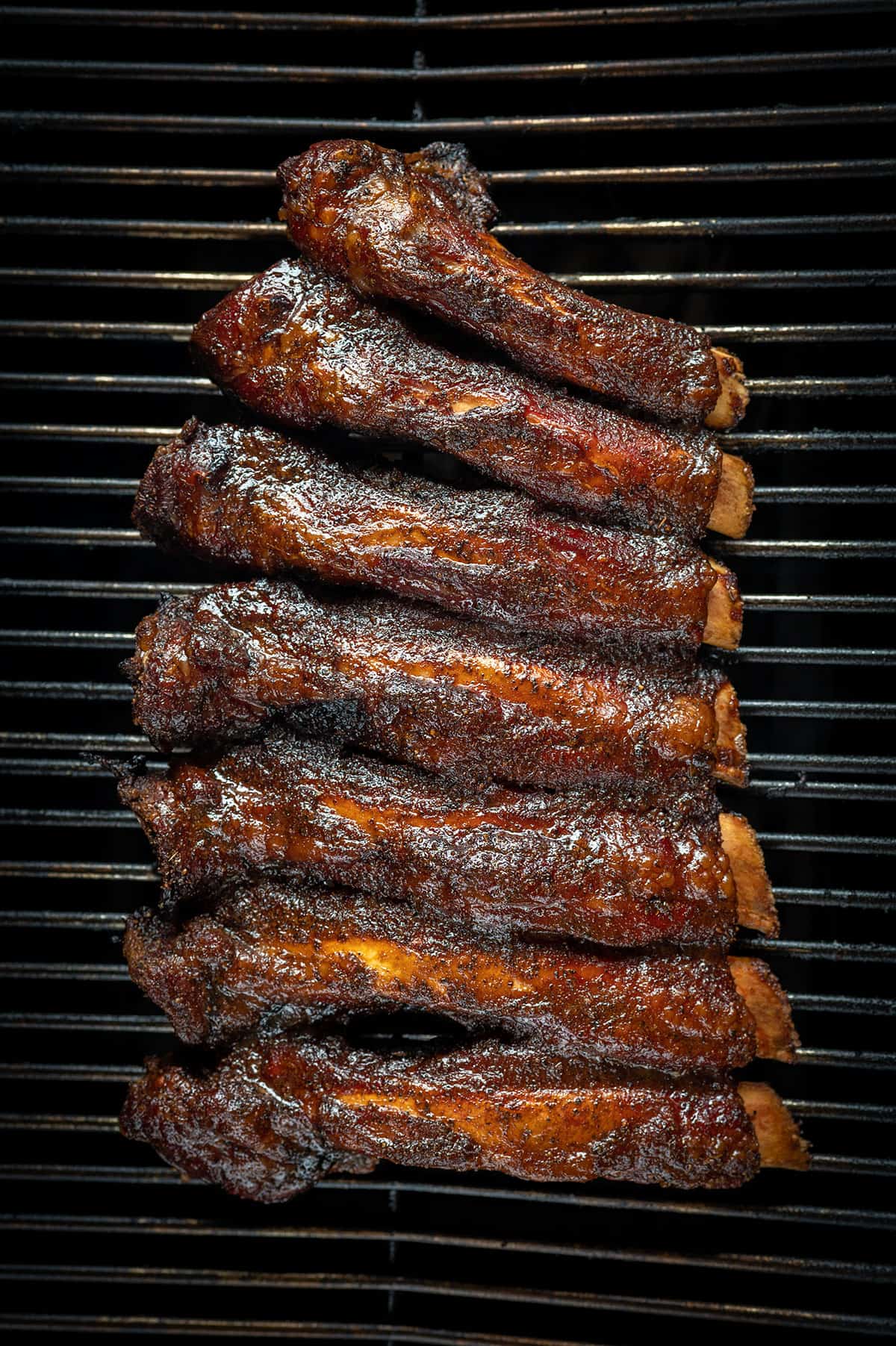
Short Ribs
This is where terminology gets confusing and I’m going to get a little nerdy with my butcher talk for a minute.
Beef short ribs can be cut from the plate (belly), rib (side and back) or chuck (shoulder) primals.
The full subprimal cut of rib bones from the rib and plate primals are referred to as butcher cut 123 and include ribs 6 through 10.
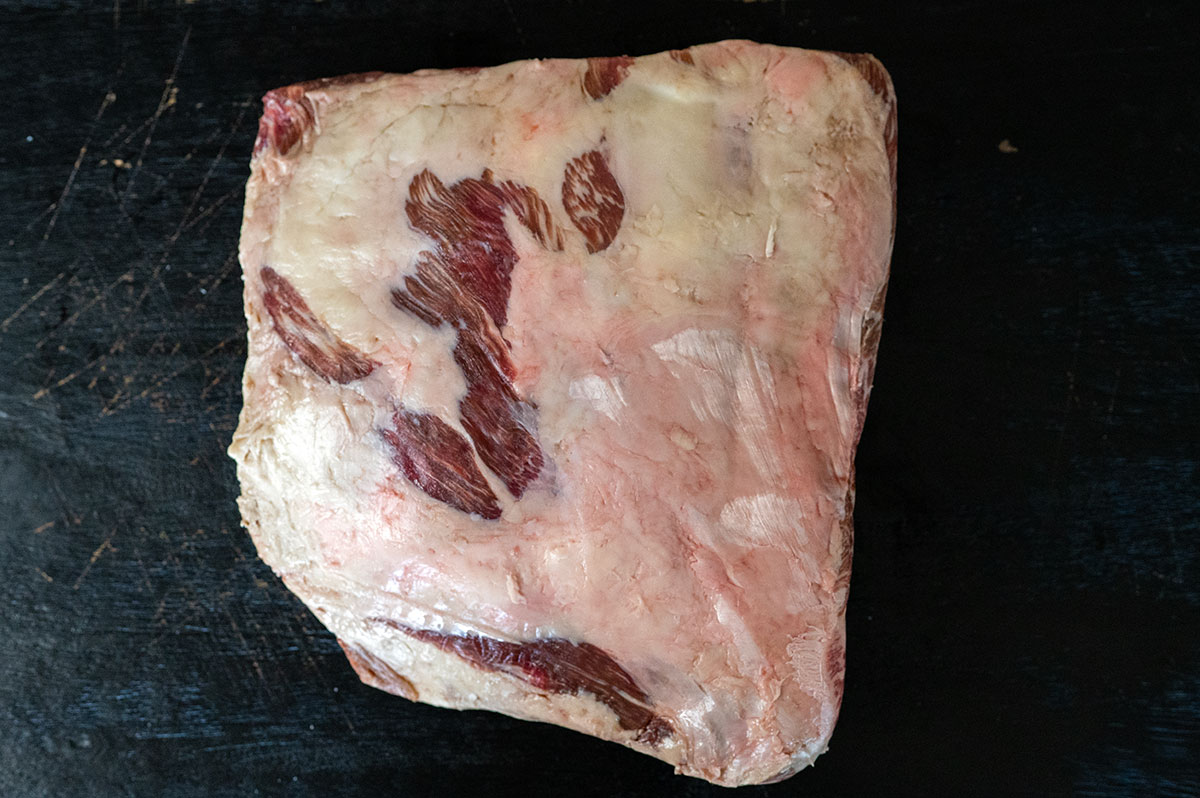
Plate Short Ribs (Dinosaur Ribs)
When the rib primal portion is separated from the plate primal section, each of those cuts are assigned different numbers. The plate short ribs are 123A.
Plate short ribs (sometimes called dino ribs or short plate ribs) are the king of the cow. They are the meatiest, beefiest ribs of the bunch. A trio of ribs easily weighs in at 5 pounds. They’re cut from the belly of the cow and have gorgeous marbling.
Although a little more difficult to find, they’re worth the effort. I recommend making friends with your local butcher. If they don’t stock them regularly, they can probably special order them for you. Just tell them you want cut 123A.
These dinosaur bones have the tenderness and meatiness of the point end of a brisket, but they’re on a stick. How yabba dabba doo delicious is that?
Try my recipe for Smoked Dino Ribs (Beef Plate Ribs)
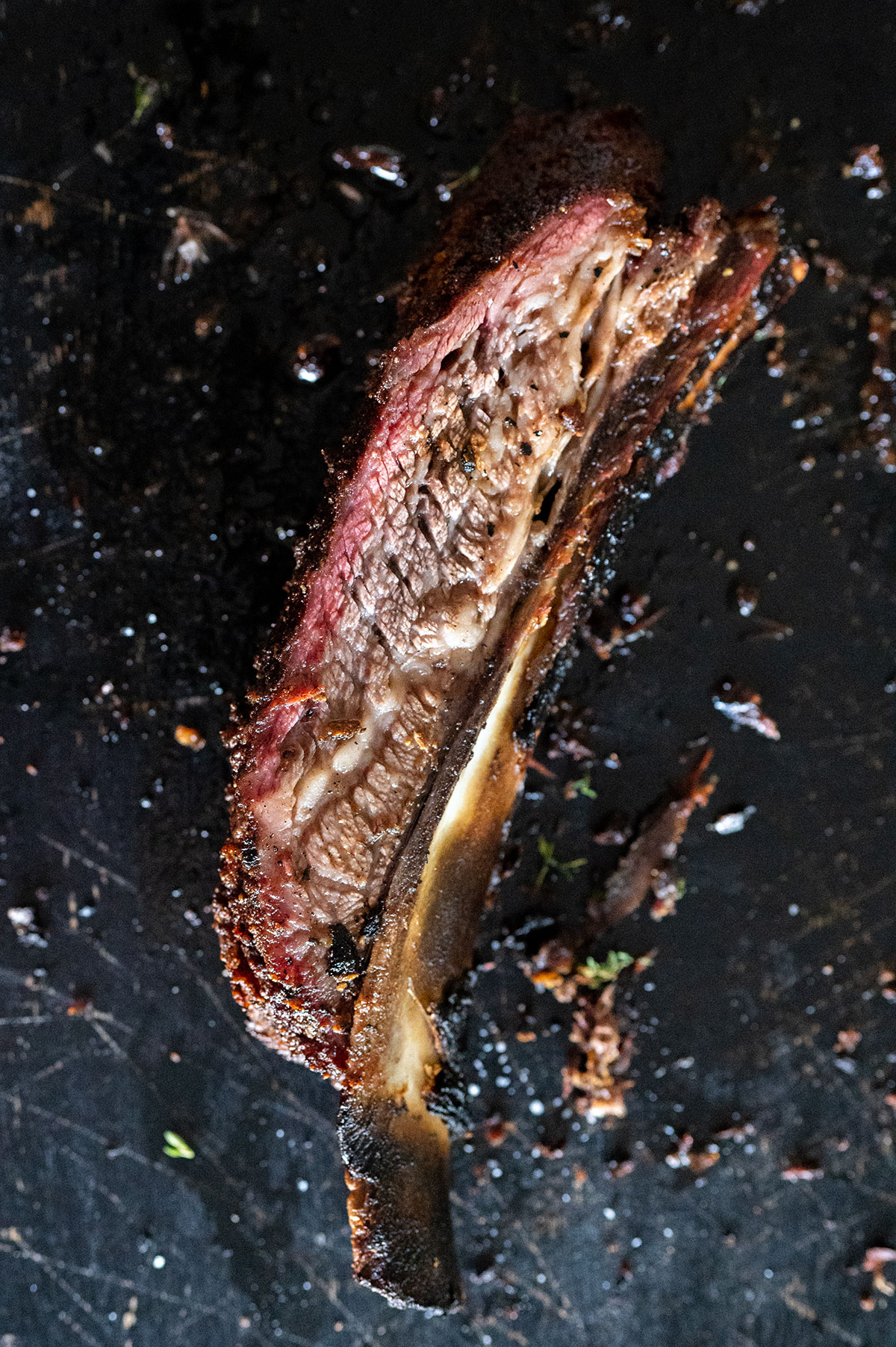
Rib Short Ribs
Short ribs cut from the rib primal are the bones that are connected to the ribeye steak bones. When butchers don’t make tomahawk steaks with long bones, those bones are instead cut off the steak and turned into short ribs.
They are butcher cut 123B and come from bones 6-8.
Chuck Short Ribs
Ribs cut from bones 2 through 5 are located in the chuck primal. They’re also called short ribs, but the butcher item number is 130.
The chuck primal is located in the shoulder of the cow. Like a pork shoulder, this meat has good marbling and is most tender when cooked for a long period of time.
Different Cuts of Short Ribs
Butchers take those different types of short ribs and break them down in a variety of different ways.
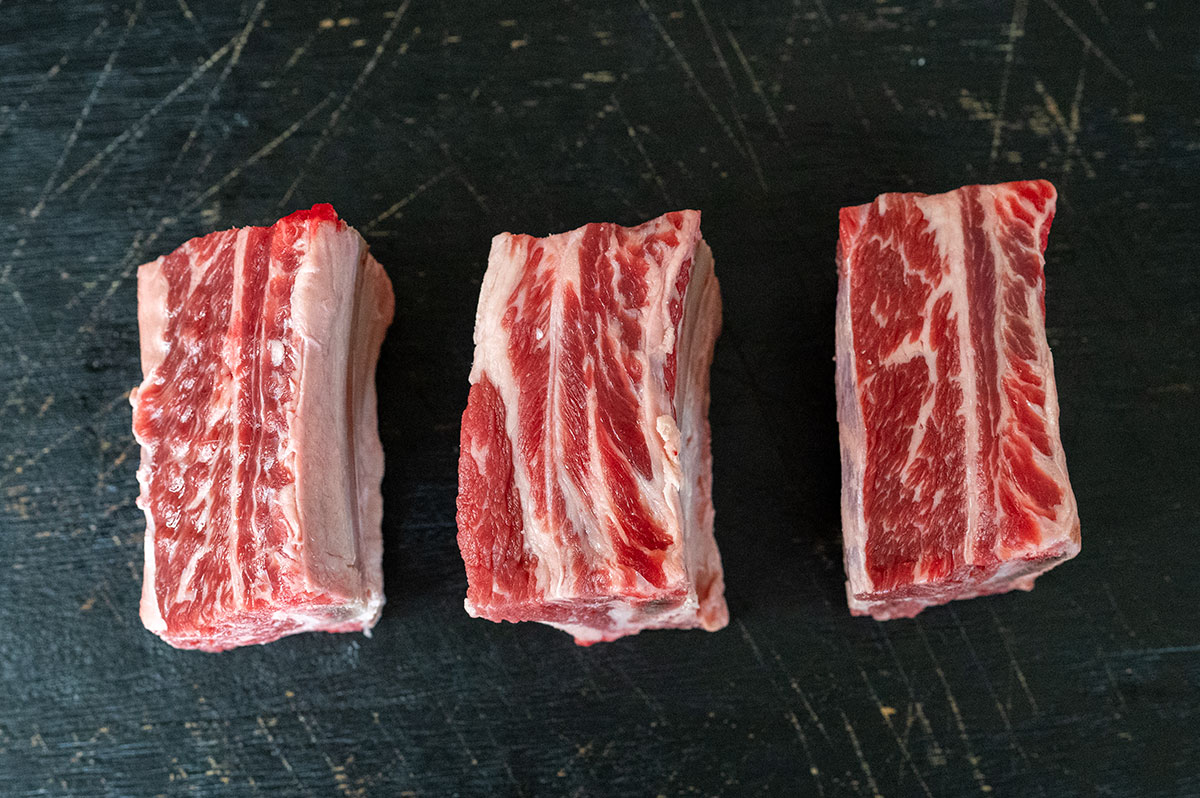
English Cut Short Ribs
When you look for short ribs in the grocery store, this is the cut you are most likely going to see.
These beef ribs are cut into individual bones and those bones are usually cut in half, so they’re 3-4 inches long. The bones are wide and flat and have a rectangular cube of meat resting on top of the bones.
Unfortunately, you may not be able to tell if the meat comes from the plate, rib or chuck short ribs, but they’re guaranteed to be delicious.
If you see a lot of white flecks of marbling, they’re likely cut from the plate primal (the belly). Either that or they’re prime grade or higher.
Try my recipe for Smoked Beef Short Ribs.
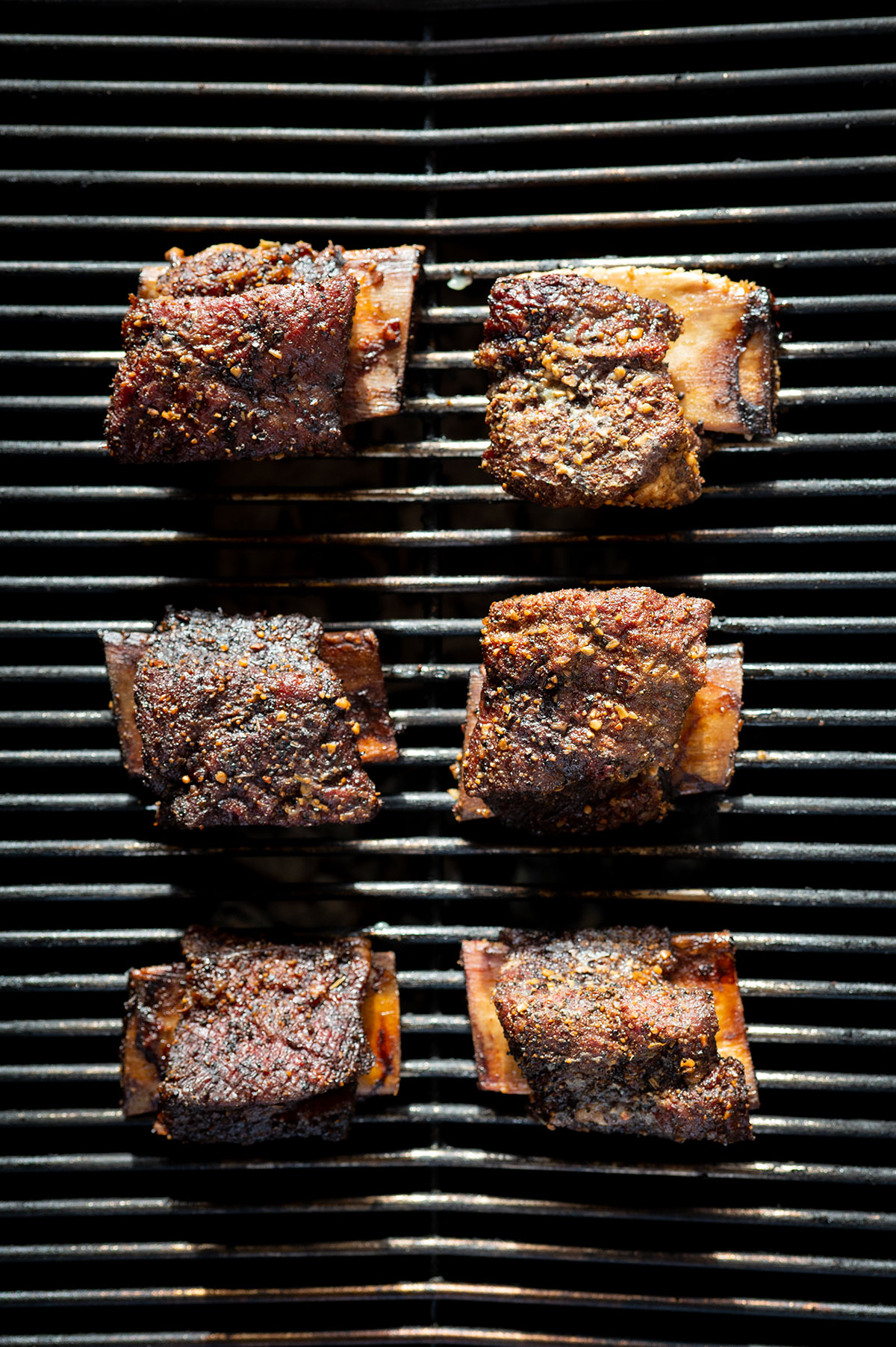
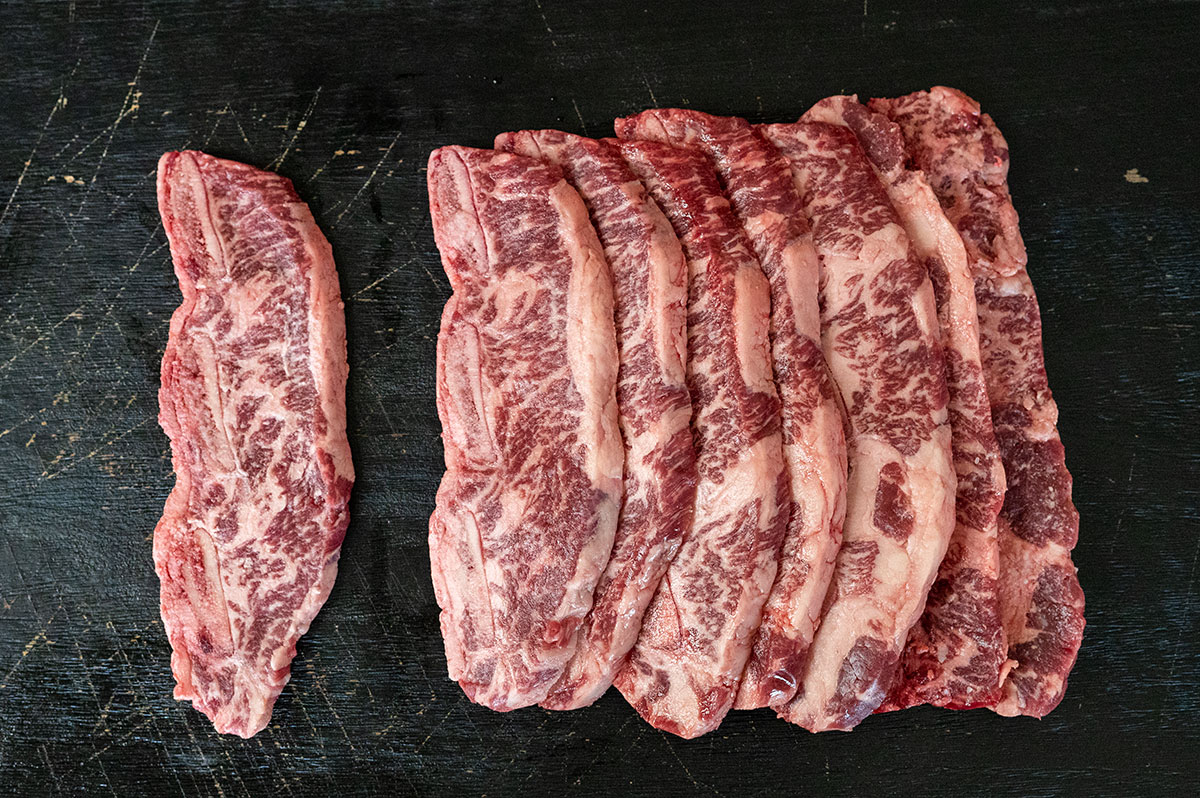
Flanken Cut or Korean Short Ribs
The 1/4-inch-thick strips of beef with 3-4 thin oval bones in them are flanken-cut ribs. These are created when a butcher slices down the rack of ribs at a 90-degree angle.
This is the only cut of beef ribs that cooks up amazingly when grilled hot and fast over direct heat. They get more tender when marinated for a few hours.
They are sometimes packaged as Korean-style ribs because it’s the cut that is used to create kabli ribs, a rib that has been marinated in a sweet soy-based Korean marinade.
Like the English-style ribs, these ribs may be cut from the plate, rib or chuck short ribs.
Try my recipe for Korean Short Ribs
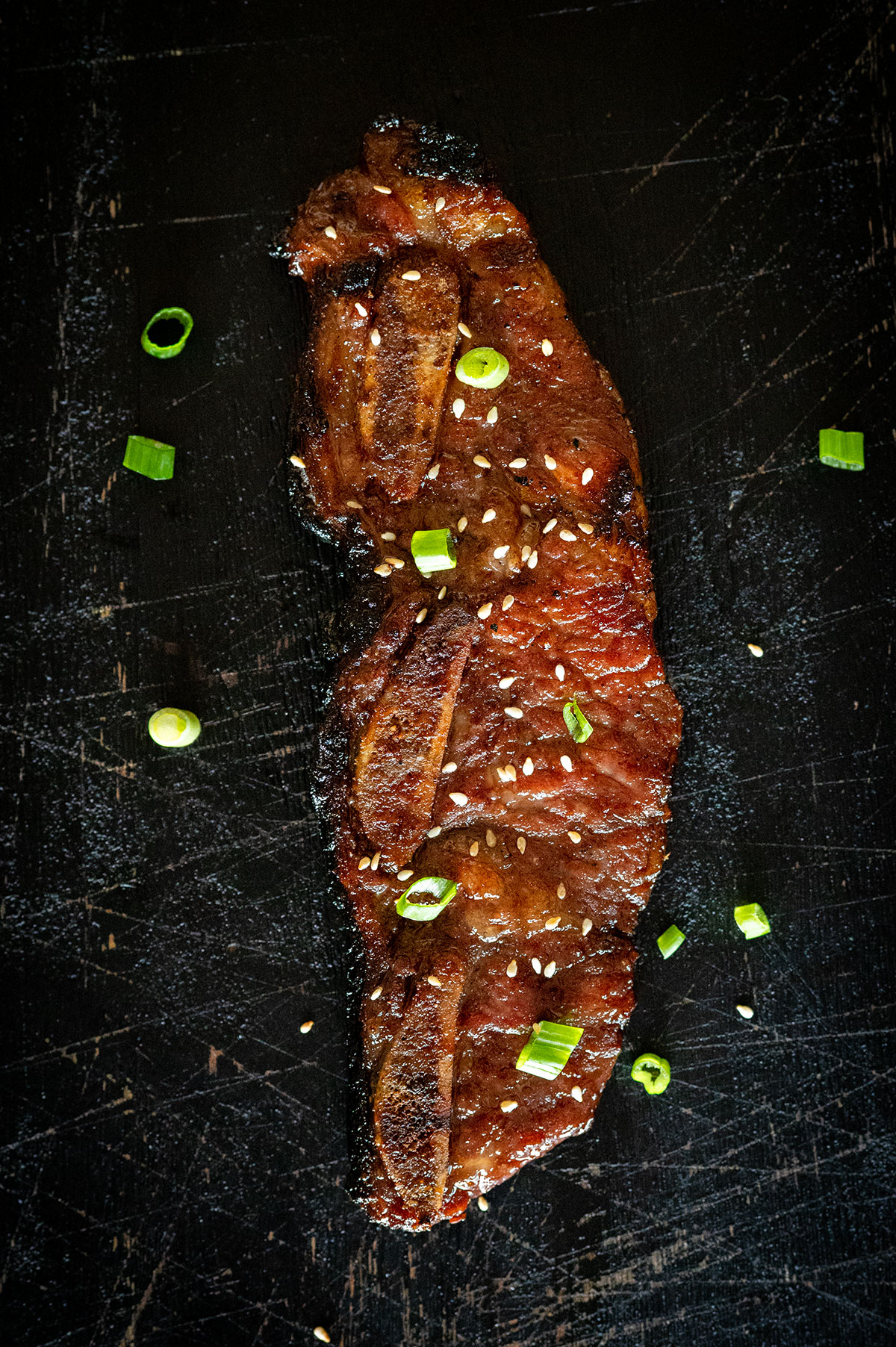
Boneless Beef Ribs
Part of the beauty of eating ribs is enjoying them right off the bone, but there are some boneless varieties, as well.
Boneless Beef Short Ribs
Boneless beef short ribs are a great alternative to short ribs, because they’re actually the same luxurious meat, they just have the bones removed.
They’re almost always cut from the chuck primal, so they are chuck short ribs.
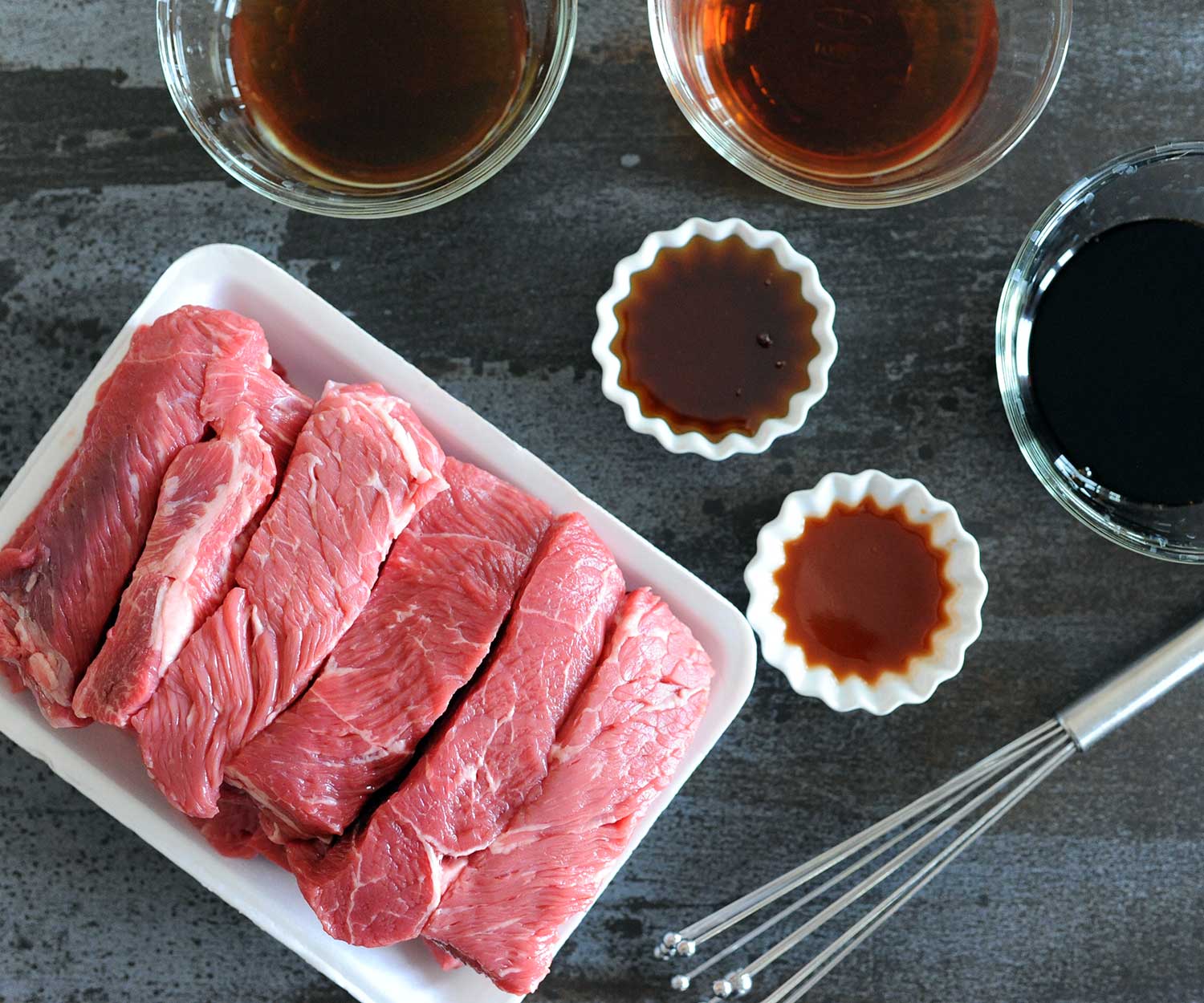
Country Style Ribs
Don’t confuse boneless short ribs with country-style ribs. These “ribs” as their called aren’t actually ribs at all.
They’re actually strips of the chuck primal or beef shoulder that are cut into boneless strips to look like ribs.
When I was a kid, mom would make these chuck ribs in the crock-pot, but nowadays, I cook them on the grill or smoker.
Try my recipe for Grilled Tender Juicy Beef Ribs.
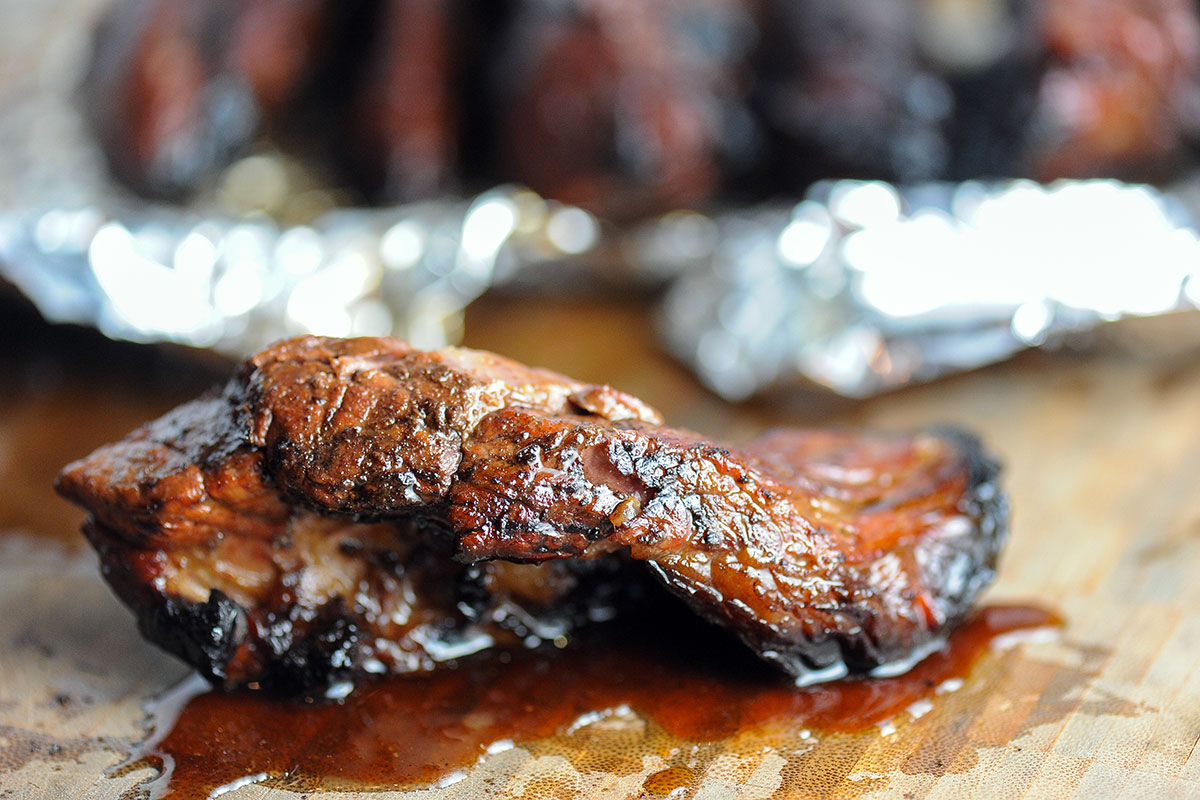
Boneless Plate Ribs
You can get dino bones without the bones. It kind of takes away the fun, but if you’re looking for an amazingly marbled piece of beef to make something like beef pastrami, this is a great cut.
Classic deli pastrami is prepared using beef navel, but that’s pretty hard to source at the retail level, so boneless beef plate ribs are the next best thing. The butcher cut number is 123D.

Beef Rib Fingers
If you can find these, they’re a real treat. When butchers create tomahawk ribeye steaks, they remove the strips of rib meat between the long tomahawk bones (the intercostal meat).
Those boneless strips are called rib fingers.
Before cooking the single ribs, you’ll want to remove the cartilage, if it’s still attached. You can cook them hot and fast like a ribeye steak, but they’ll be more tender if you use the low and slow cooking method over indirect heat.
Try my recipe for BBQ Teriyaki Beef Finger Ribs.
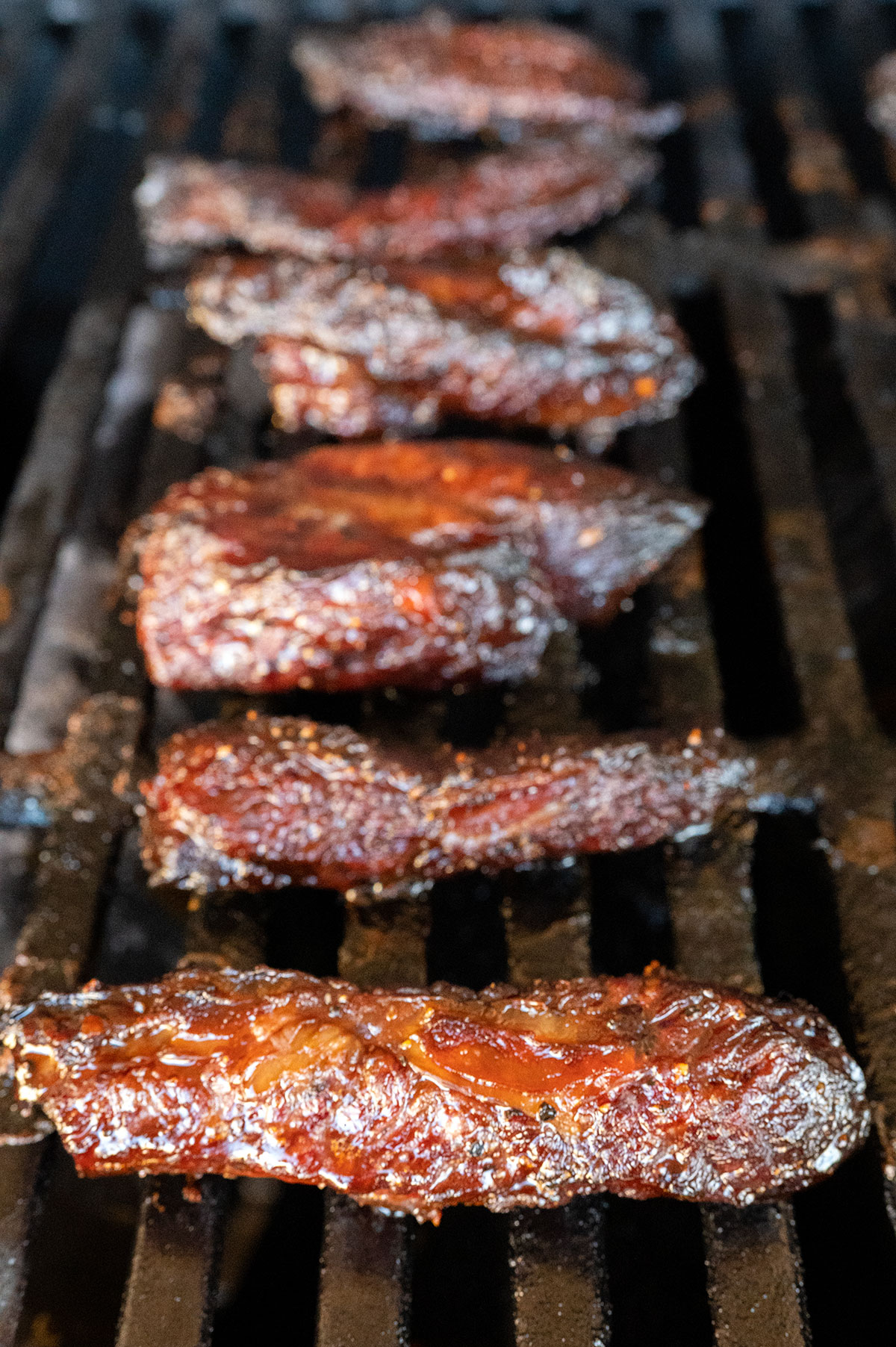
Frequently Asked Questions
Technically, there are beef back ribs and short ribs. However, the short ribs subprimal can be broken down into numerous different cuts, including plate short ribs, chuck short ribs, English-style short ribs, flanken-style short ribs, boneless short ribs and rib fingers.
Most types of beef ribs need to be cooked for several hours, but when they are cooked properly, they are extremely tender and not tough at all.
Korean short ribs are the only beef ribs that do well when cooked quickly on a grill, but it’s best to marinate them first.
The huge racks of beef ribs that a lot of people call dino ribs are beef plate short ribs. They are cut from the plate primal cut (belly) of the cow.
They can be hard to find at the grocery. To special order them, tell your butcher you want cut 123A.
Learn more about beef
Learn about different types of pork ribs
Christie Vanover is a Master of Beef Advocate for the National Cattleman’s Beef Association and has butchered several cows with meat scientists at the Certified Angus Beef brand Meat Lab. Information for this article was also confirmed through the North American Meat Institute Meat Buyer’s Guide.
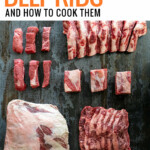
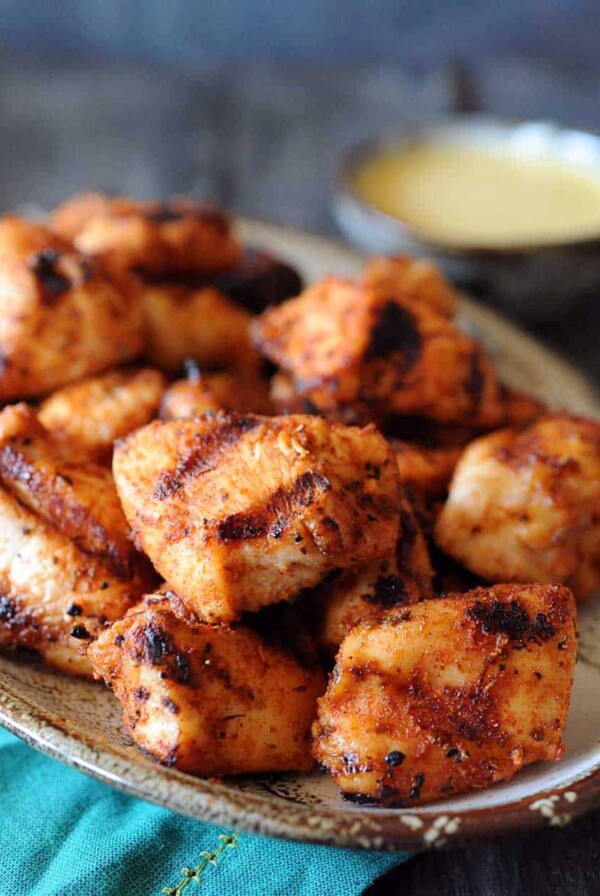

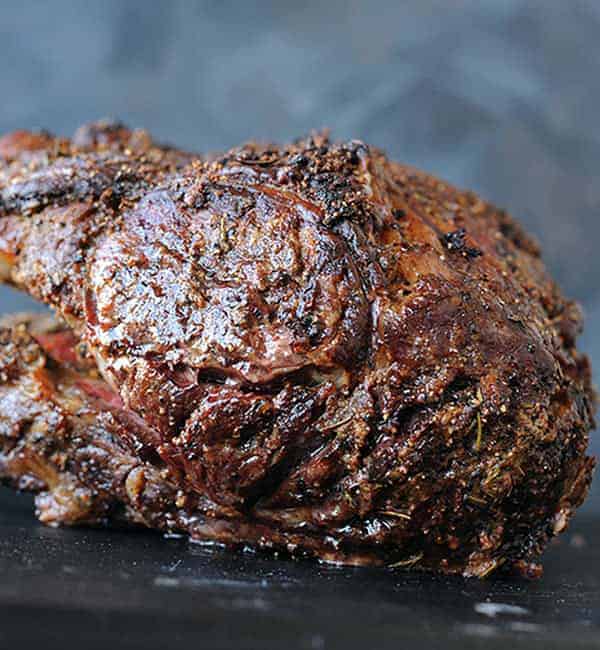
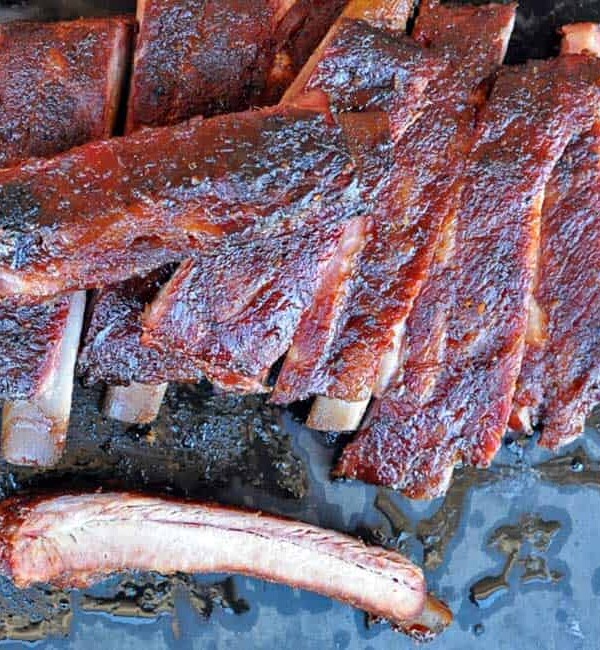
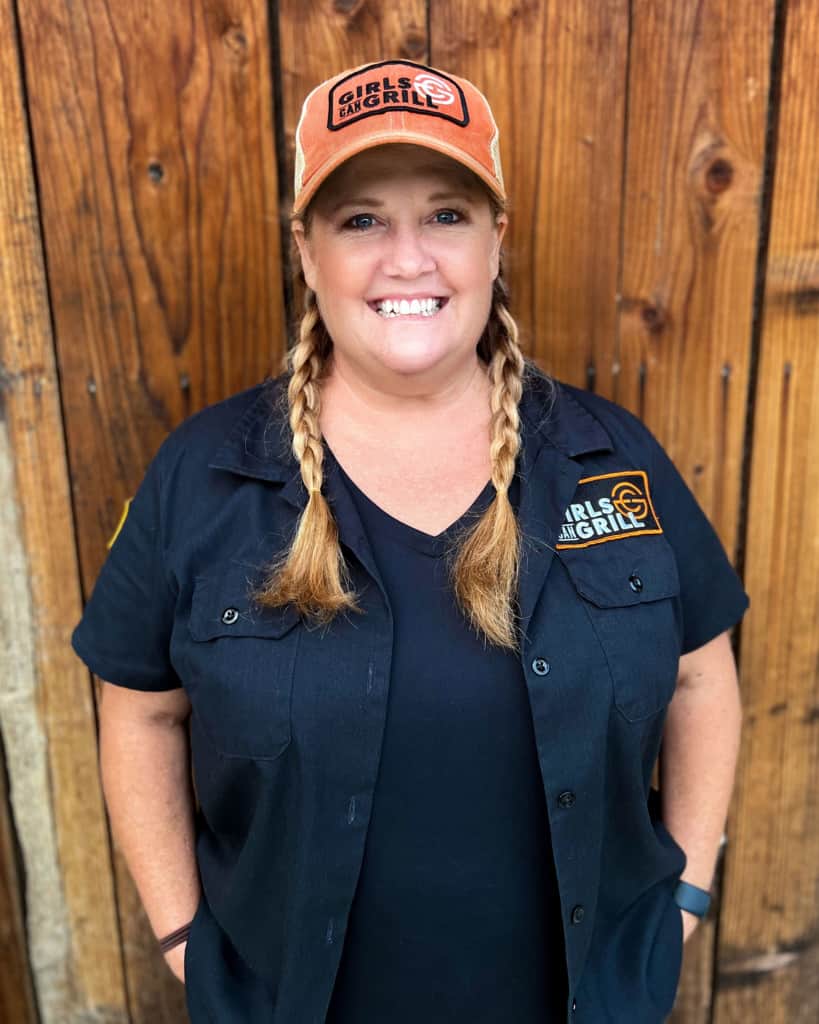






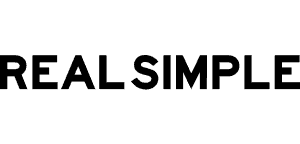

Love love those amazingly crusted Vegas short ribs????⭐️
Thanks Lori!
Call them what they are…strips of beef shoulder roast. Nothing ribs about them. Same as country style pork boneless ribs…strips of shoulder meat. The word ribs adds another 1.99$ to the price.